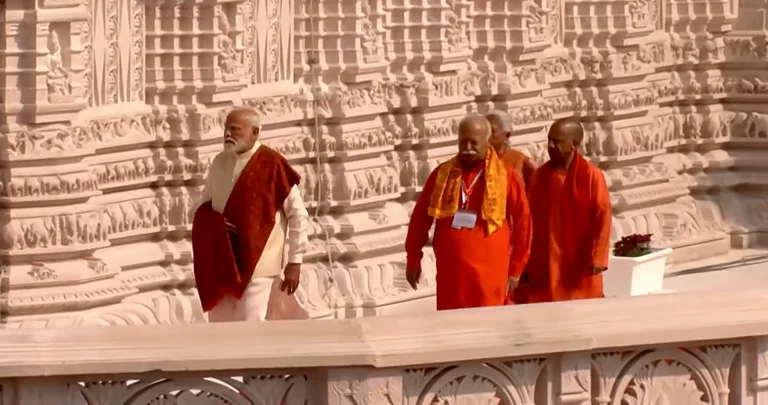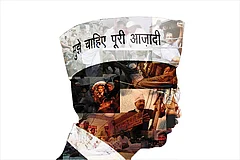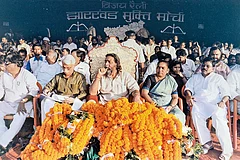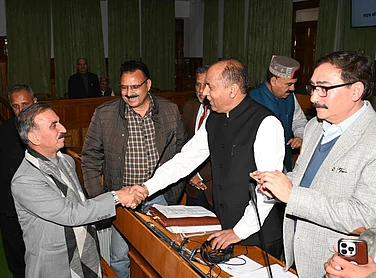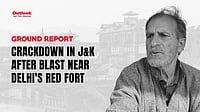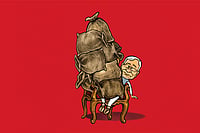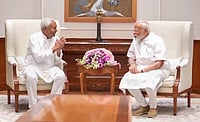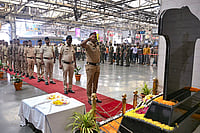“There is now more than ever some
need for Utopia, in the sense that men need—as they
have always needed—some vision of their potential,
some manner of fusing passion with intelligence. . .
The ladder to the City of Heaven can no longer be a
‘faith ladder’, but an empirical one; a Utopia has to
specify where one wants to go, how to get there,
the costs of the enterprise, and some realization of, and
justification for, the determination of who is to pay.”
—Daniel Bell
It was in 1960 that the end of ideology was announced in a book called The End of Ideology: On the Exhaustion of Political Ideas in the Fifties by Daniel Bell where the American writer argued that political ideas had lost their grip on people’s imagination and emotions. Bold blueprints were no longer desired, he said. And with that, he pronounced the 1950s as the graveyard of ideologies. There was no commitment to a cause, no yearning for deep moral satisfaction.
But the 1960s saw a return to liberalism and old school capitalism as well as a return to moral values in the Western world politics. We have since then alternated between the endings and the beginnings in Western social sciences, which is also what framed our ideological debates in the early years of India’s independence. In binaries. Left and right. Liberalism and ‘ill-liberalism’. Socialism and capitalism.
But we often forget the context. Of time and place. There was this transition then from traditional agrarian societies to modern industrial societies and for better or worse, much of that class conflict had been regulated in those societies. In ours, not so much.
But then, there came the great disruption brought in by polarisation and ideology was rediscovered in the 1960s and another ending had begun. This is why it is important to look everywhere for endings and beginnings. West and East. Within and Without.
India’s tryst with ideology has been more complicated than the West’s. We have caste and region, language and religion. All these are forces in their own right. In different times and different places within our country, one has trumped the other.
In 1989, the Bharatiya Janata Party (BJP) adopted Hindutva as its political ideology. Class politics was replaced by identity politics. Nationalism took over. Everything else was pushed aside. That’s how we experienced a shift. Economics gained centrality. Ideologies became diluted. Even diffused in some sense.
In a conversation with a political leader just around the time of the consecration of the Ram Temple in Ayodhya when the Congress refused to attend the ceremony, he said that it was a wrong decision as they would lose out on the Hindu voters. “Secularism as an ideology has run its course. Hindutva as an ideology will also become obsolete but the question is the time frame for it to happen. This is the Hindu rashtra for now,” he said.
This brings us to an interesting question. What is the ideology of the Congress? As a voter, I’m not sure I know. The locks of the temple were opened in 1986 under the prime ministership of Rajiv Gandhi and over the years, the party’s stance on the Ram mandir has changed several times.
In November 2019, the grand old party welcomed the Supreme Court verdict that paved the way for the temple construction and even sent out a reminder that it was the Congress government that had acquired a 67.7-acre site next to the disputed site in 1993.
The soft Hindutva game has been played by many, including the Aam Aadmi Party (AAP) and the Congress, which has meant that they have consistently diluted their political philosophies in trying to counter the BJP and by aligning with majoritarian politics which they have equated with Hindutva, they have now landed in a position where one is unsure what their ideological position is with regard to secularism or majoritarian Hindutva nationalist ideology.
Similarly, the BJP which originally talked about social conservatism and then Hindutva, has now raised a pitch of getting more than 400 seats. But they aren’t saying what they are going to deliver when they get there. Yes, they have held on to the Hindutva ideology and talked about development and being a super power but then, the Ram mandir is already there and the promise has been kept. What’s next? Is there a blueprint for that?
They have said they are committed to nationalism and national integration, to democracy, to Gandhian socialism and to positive secularism (sarva dharma samabhava).
India doesn’t operate in the same terms as democracies in Western countries where the ideological spectrum is defined in left-right terms and is shaped by underlying socio-economic factors. In a country like India, we are faced with political parties that are personalised factions or show dominance by a single organisation. Political change is now a rearrangement of parties that are obsessed with access to power and resources. Individuals, not ideologies, dictate our politics.
Look at Narendra Modi and Rahul Gandhi. They are individuals who serve as champions of consumption communities and we are now at a point where party politics has become transactional and more authoritarian. Consider the Janata Dal United (JDU) whose Nitish Kumar was recently sworn in again as the chief minster as a BJP partner in Bihar. I am not sure what ideology his party represents because for a long time now, his politics has been transactional in nature. The lack of attention to political ideology is not a good trend. Ideology matters because as a voter, I’d like to know why I am selecting someone and what they stand for. The BJP’s insistence on establishing ownership over cultural issues is in contrast with the Opposition’s secular policies. But with the Opposition mostly playing around with soft Hindutva, how will that work in the next elections?
Even if we look at the 2014 BJP election campaign that was centered around a corruption-free government, we can see that it was to also make way for the Hindu identity both nationally and internationally. In the post-2019 phase, the BJP has furthered its Hindu nationalist agenda by nullifying Article 370 governing the status of Jammu and Kashmir. Then, it notified the Citizenship Amendment Act (CAA). In the states where the BJP is in power, they have introduced statutes against religious conversion. In this, they have shown that ideology matters in the Indian political landscape. They have delivered what they promised. What’s the next big promise in line with that ideology?
But the future is always a question. The past, full of lessons. I am not sure what anyone else stands for. Barring a very few like the Rashtriya Janata Dal (RJD) that have never been in a coalition with the BJP. Their ideology states that they stand against communalism in any form and espouse socialism for the sake of the dispossessed. In 1990, L K Advani’s chariot leading the Ram Rath Yatra to galvanise Hindus was stopped in Samastipur in Bihar and Lalu Prasad Yadav, a young chief minister then, arrested the BJP leader.
Communal riots happened. The Babri Masjid was demolished in 1992. In 2024, the Ram mandir was built at the site. Lalu Prasad Yadav didn’t attend. But in that, there was his ideological stance unlike many others. But the RJD is an outlier in that sense. I know what they stand for.
In this issue of Outlook, we look at some of the regional and national political parties and the shifts in their ideological stance as they strive to navigate political power, coalition politics and opportunism. It is a reminder for us and for them about what they stood for once. Lest we forget.
Dravida Munnetra Kazhagam’s (DMK) Udhayanidhi Stalin, who is also the DMK’s youth wing secretary, said a few months ago that ideology is more important than power. We hope this isn’t the end of ideology. According to a report by the Association for Democratic Reforms (ADR), between 2016 and 2020, 443 MLAs and MPs have defected and contested elections from the new host parties. Did they abandon their ideologies? Or did the parties they came from dilute their own? Did they do it for power? Or for survival? And if the BJP is wooing leaders from other political parties, is it not then diluting its ideology by getting people who stood for something else earlier?
Bell had argued that in the post-1945 world, welfare state and secularism, mixed economy and political pluralism were largely accepted ideas. That’s why the ideologies that demanded those had become redundant.
MORE FROM THIS ISSUE
We need more ideology. Not for Utopia but to come out of dystopia first. Not to get to heaven on a faith ladder but to find our place in these times and in this country with ideology. To reject or to embrace. It’s not my job to tell anyone what they are supposed to choose. But I want to be sure of who stands for what. We must therefore ask for a return to ideology. In this election season. Before it is too late.
(This appeared in the print as 'Return To Ideology')









